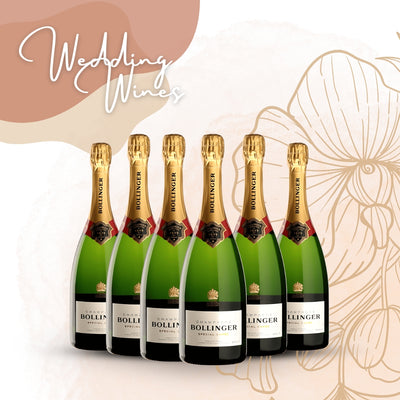Discover France's Best Kept Secret Wines
When talking about the French wines, what comes to your mind is probably the first growth of Bordeaux, Burgundy Grand Cru vertical tasting, Hermitage and Chateauneuf-du-Pape from Rhone. You name it, we’ve drunken it. But what’s more apart from these typical French legendary wines? There’re actually countless hidden treasures of the French wine world awaits to be discovered.
Alsace
Wines from Alsace is by no mean a popular choice for a blind tasting game as its flute-shaped bottle is a bit too outstanding. Being part of Germany in the past, Alsace’s influence from Germany includes the tapered shape of wine bottles as it’s popular for the limpid white wines among the regions, instead of using the shouldered bottle which is designed for smooth pouring of the red wines while collecting residues. White wine lovers are always fans of Alsace. In Alsace, over 80% of the wine produced is white, which are highly aromatic, richly textured and spicy wines. By law, there’re only seven grapes permitted for wine production while four of them were named as ‘noble’ grape varieties, including the well-known steely Riesling, the lychee-like and floral Gewurztraminer, the slightly spice-scented Pinot Gris and the delicate Muscat. In Alsace, the name of the grapes is clearly listed on the label, completely different from the bewildering wine labels of other wine regions.
Loire Valley
For a two-hour drive south of Paris, before reaching Cognac and Bordeaux, you’ll arrive at the Loire Valley, the playground of the French court in the old days and that of affluent Parisians in the modern days. Either ‘Sancerre’ or ‘Pouilly-Fumé’ is the first encounter with the Loire Valley wines for many drinkers. Both famous ambassador wines are made with the same grape varietal i.e. Sauvignon Blanc, offering light-bodied freshness and fine lemony flavour with bright acidity, featuring a distinctive gun-flint aroma. Some drinkers prefer the more smoky Pouilly-Fumé.
The most classic pairing with freshly shucked oysters served with mignonette sauce is an all-time favourite at the dining table. The Loire, the longest river in France, nurtures an array of varied wine styles. Even in the region of Vouvray, wines range in style from dry to sweet, while the most popular ones are medium-dry (Sec) and sweet (Demi-Sec), delivering intensely floral and honey-like aromas.
Beaujolais
Beaujolais is a region to the south of the world-renowned Burgundy, bringing a completely different wine style. With 99% of production in red wines, Beaujolais is called the Kingdom of Gamay since it is the major grape varietal grown in the region. Unlike most French wines that benefit from ageing, the simple and fruity Beaujolais is best consumed when young and fresh, especially for its red cherry and strawberry fruit notes with the interesting hint of bubblegum. The minimal tannin in the wine makes it easy to gulp down. The most well-known region in Beaujolais is ‘Fleurie’, aka The Queen of Beaujolais. If you look for something more chunky, go for ‘Morgon’. And ‘Bouilly’ is always a crowd-pleaser.
Languedoc-Roussillon
Languedoc-Roussillon is a tourist destination located in Southern France, best known for its beaches and castles embracing the Mediterranean Sea. It’s always compared to the adjacent Provence region. Producing more wines than the United States, Languedoc-Roussillon produces one-third of France’s total wine production. But quantity over quality is not the case here and you’ve just got to know where the favourable vineyards are situated. For example, with the right level of sunlight, sea breeze and mist on ‘La Clape’, an isolated hill in the plains on the Mediterranean Sea, the grapes grow into bunches of a fuller and warmer character, perfect for making wines full of intense ripe blueberry with flashes of herbs and liquorice notes. The Rothschild family, known for its ownership of Chateau Mouton-Rothschild, is also attracted to the region for its superior climate and soils. By strictly picking Cabernet Sauvignon grapes at full maturity, the winemaker produces some rich and robust wines of smooth tannin.





